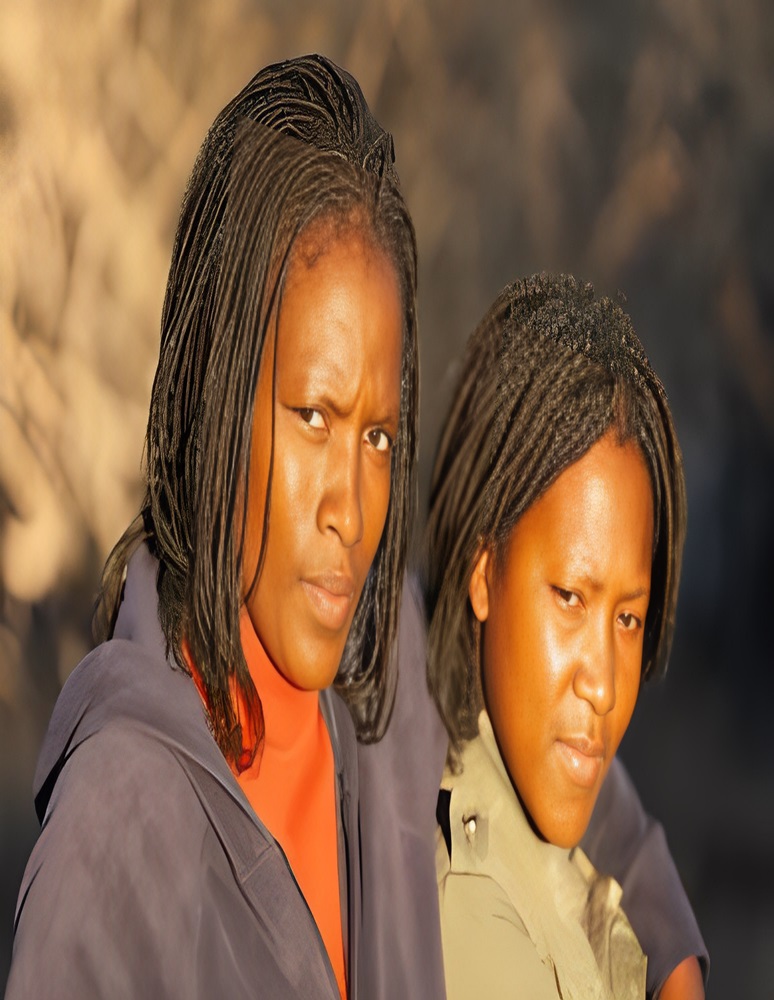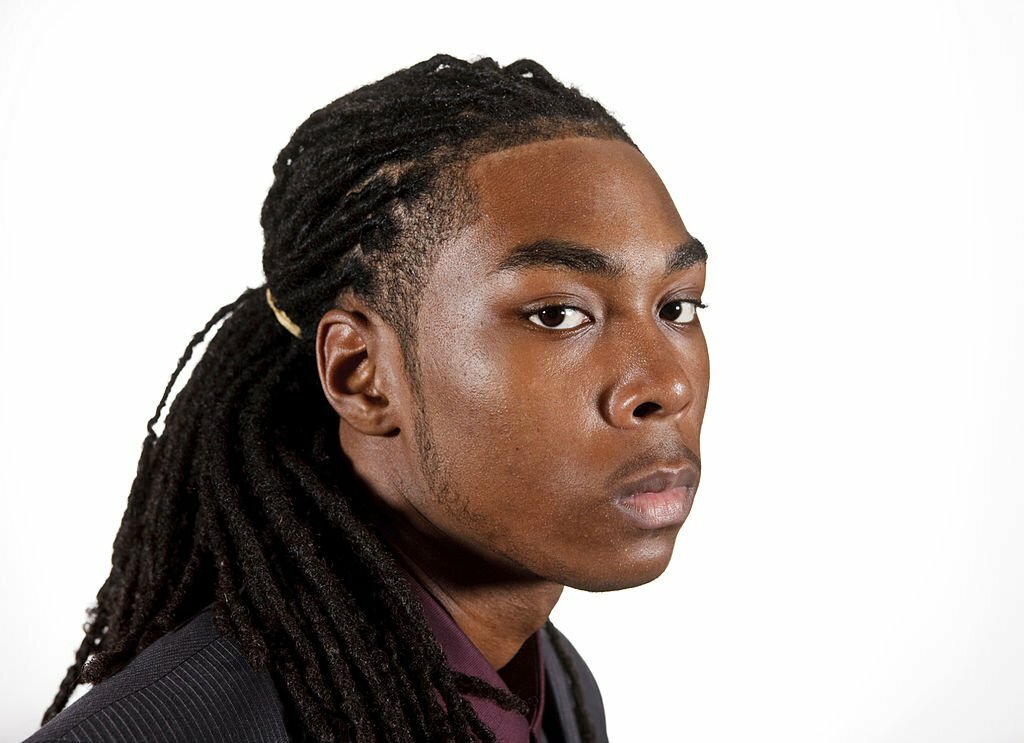This blog will discuss different loc types and guide you on which loc is best for your hair. Moreover, Dreadlock Wig has compiled all the essential information about what
dreadlocks are, how to start locs, hair to maintain dreads, and different stages of locs to help you figure out your locs journey. Further, remember not to check our blog to get expert advice about your locs issues.
Read: How To Choose The Right Dreadlock Sizes For Your Hair?
Types of Locs:
Locs are one of the distinct hairstyles that appear as rope-like structures. The locs initiate from starter locs and end at the rooted locs. In addition, different types of locks are designed for specific hair types. You can also choose the locs for your hair in the beginning according to your hair type.
These loc types include:
- Traditional locs
- Freeform locs
- Semi-free form locs
- Florida wicks
- Instant locs
- Sister locs
- Microlocs
Read: 10 Best Dreadlock Styles for Man in 2024
7 Different Locs Types for Women
Let’s dig deep into different loc types, how to start a distinct kind, how much they cost, and their pros and cons. Moreover, take advantage of this information and begin after thorough research.
Apart from the online research, contact a consultant and share all your concerns. Make sure you get enough advice before starting.
1: Traditional Locs
The first and the most popular locs type are traditional locs, 4-14 mm in diameter, and fall under medium to large size. In addition, this locs type is easy to install with the finger coils and comb coils.
In addition, the best thing about this type of locs is that once installed, it can be transformed into other types. Not only does it make it a traditional style but also a classic one.
Traditional locs are the size of a pencil and give extra volume and bounce to your natural hair. Furthermore, the locs are thick hair strands and can’t be flat ironed or curled.
Pros:
- Easy to achieve
- Require minimal effort to start
- Easy to style in different looks
- Can be easily maintained at home without a stylist
Cons:
- Medium to high maintenance
- Require regular cleaning and detoxification
- Not easily manageable
2: Freeform Locs
Freeform locs are the second type of dreadlocks for women to carry daily. They are mainly associated with the Rastafarian movement for religious reasons. Further, as the name reveals, the locs are easy to carry around without styling.
Additionally, this is the sole type of locs that suits every hair type and requires minimal effort in styling. The diameter of freeform locs is around 15 mm, making them appear heavy.
Furthermore, to grow freeform locs, you need to partition your hair into equal sections and let them grow naturally by matting.
Apart from this, other techniques are also used, such as two-strand twists and braids, to obtain freeform locs.
Pros:
- Thicker locs
- No retwisting or maintenance
- Less time on styling
Cons:
- No uniform look
- Not recommended for kids
- Less socially accepted
- Prone to buildup
3: Semi freeform Locs
This type of locs is easily achievable with the palm rolling technique. It allows your hair to grow naturally. Additionally, the diameter of semi-freeform locs ranges from 5 mm to 14 mm.
The best thing about this type of locs is that you can do it at home or by a professional. Furthermore, the locs are easily maintained with simple palm-rolling techniques at home.
Here are some merits and demerits of having semi-freeform locs:
Pros:
- Grow organically
- Easy to style
- Quickly retwisted
- Presentable look
Cons:
- Require proper maintenance
- Less styling ideas
- Frequent retwisting
4: Florida Wicks
Firstly, as the name reveals, this locking type comes from the wicks that originated in South Florida. Secondly, the name shows that they present the wick of a candle in appearance; hence, they are named so.
Moreover, wicks come in a 2-5 inches diameter for each wick. In addition, this size differs from person to person depending upon their requirements. Lastly, it also depends on the type of hair.
It is now possible to achieve the Florida wicks using natural locs and faux loc extensions. The existing locs are combined using the crochet needle to achieve these locs. Additionally, the extensions are added to natural locs for extra volume.
Lastly, the rubberband method fuses all the locs into one larger wick.
Pros:
- Less damaging
- Appear natural
- Protective hairstyle
Cons:
- Need proper hair care
- Prone to buildup
- Difficult to detox
- No styling
5: Instant Locs
If you are looking for short dread styles for guys or girls, Instant Locs is one of them. It is not only an easy-to-reach look but also requires less time than all other types.
Moreover, it is easy to achieve and feasible for short hair as short hair is easy to transform into locs. The locs look unreal and easily unravelable at home, making them temporary hairstyles.
In addition, it is an instant transformational hairstyle for people always looking for adventure. It is also easy to create with the crochet hook into unified locs. Apart from this, the locs can be easily made in any hair. It has some pros and cons as well, so let’s have a look:
Pros:
- Easy to start
- Easy to style and maintain
- Quick hairstyle
Cons:
- Stiffness
- Tough to learn
- Higher installation costs
6: Sisterlocs
Sisterlocs are one of the most minor types of locs, and they are high maintenance and require locking techniques to develop. Besides, their diameter ranges from 2 to 3 mm, and they appear very thin.
Additionally, JoAnne Cornwell developed sisterlocks with locking techniques and a training program. Till now, the sisterlocs are famous for their branding, unlike other dread types.
These locs were explicitly developed for individuals with kinky hair to protect their natural hair with this style and some more styling options. Additionally, the purpose was to protect different types of hair with thin structures that are manageable as well.
Moreover, being thin in diameter, the locs are easily managed in other hairstyles such as braids, ponytails, and buns. Here are a few advantages and disadvantages of having sister locs:
Pros:
- Versatile
- Easy to style
- Best for long-length hair
Cons:
- Time-consuming process
- Needs a professional
- Retightening is required every six weeks
7: Microlocs
If you want a voluminous look and versatile hairstyling ideas, microlocs are for you. Additionally, the locs may appear as small as 0.6 cm, but they look amazing after styling.
Further, with this small size of locs, you can easily rock 500 to 1000 locs on your scalp without any extra tension or stress on the scalp. Last but not the least are the microlocs, which resemble sisterlocs. Added, they are also small-sized small-sized locs with a 2mm to 3mm diameter.
Moreover, microlocs are thin and the best dreadlocks for guys with long hair. Unlike traditional locs, they are easy to style with flat iron and curlers, which makes them a perfect fit.
The accessibility to different hair looks makes it an ideal loc type for curlier and kinky hair types.
With more time for installation and proper use of the right techniques for styling, it is an expensive locs type. Additionally, a significant difference between the sister locs and microlocs is the branding technique used in sister locs. Lastly, some salons have established their branding techniques for microlocs as well.
Pros:
- Lighter on scalp
- Easily manageable
- Resemble braids and sister locs
Cons:
- It isn’t easy to find an authentic consultant
- High maintenance
- Higher installation and maintenance costs
Read: What are the Differences Between Microlocs vs Sisterlocks?
The Bottom Line:
Locs vary in size, shape, diameter, and installation technique, which makes them all different. With the advancements in hairstyles, the locs are also evolving with time. So, if you are a beginner, choose the right locs according to your hair type. Additionally, you can seek a location for a consultation.
Read: How to Start Locs with Two Strand Twist Dreads: A Complete Guide
FAQs
What are the three types of locs?
Wicks, microlocs, and traditional locs are three significant types of locs. Moreover, these three types have more subtypes depending on their diameter and installation techniques.
Are dreads and locs different?
Dreads come from the word “dreadful,” used in ancient times for enslaved people who wore this style and were criticized. Further, locs come from the hair’s locking, resulting in rope-like structures.
What are the five stages of locs?
The five major stages of locs are starter locs, budding stage, mature stage, and rooted stage. All these stages have different time frames and different characteristics. In addition, the logs shrink and show frizz during the loss journey.
Are locs permanent?
Yes, as the locs is a protective hairstyle, it locs the natural hair, which is not easy to unravel. In addition, you can’t manipulate it occasionally, making it a permanent hairstyle.



